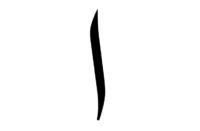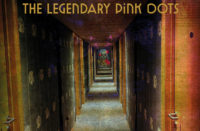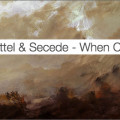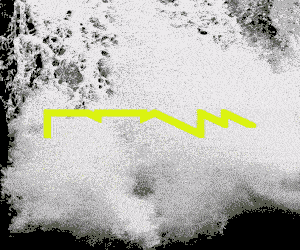 (07.21.05) Secede has clearly been very busy since his debut album, Bye Bye Gridlock Traffic was released on Merck in 2003. His second album, the long delayed Silent Flower Observers, is due for release on Neo Ouija in August, making Tryshasla his third full-length release. It is the second release on the fledgling Dutch label Sending Orbs, run by Wouter Eising (Kettel’s brother), Bas de Kort and Kristian Peters. Sending Orbs is apparently a non-profit label: the income generated by each release is channeled directly to the artist and to the production of the next release. That their first album,
(07.21.05) Secede has clearly been very busy since his debut album, Bye Bye Gridlock Traffic was released on Merck in 2003. His second album, the long delayed Silent Flower Observers, is due for release on Neo Ouija in August, making Tryshasla his third full-length release. It is the second release on the fledgling Dutch label Sending Orbs, run by Wouter Eising (Kettel’s brother), Bas de Kort and Kristian Peters. Sending Orbs is apparently a non-profit label: the income generated by each release is channeled directly to the artist and to the production of the next release. That their first album,
Kettel’s Through Friendly Waters, was a success is readily apparent both from the outstanding presentation of this second release and the fact that Through Friendly Waters had to be re-issued to satisfy demand. Secede’s imagination must be an exceedingly crowded and exciting place; his albums are always teeming with ideas, many of which are touched upon only fleetingly and, with arguably one exception, there’s not a single wasted or overstretched moment on Tryshasla. It could be said that stylistically Secede has taken up the mantle of The Orb, creating vast imaginary worlds and sweeping, breathtaking vistas through eclectic and manifold film samples, field recordings and carefully segued musical genres. In fact, if the Orb were still making albums of this caliber today it’s highly likely that their reputation and success would still be as great as the days of U.F.Orb, Blue Room and Orb’s Adventures Beyond the Ultraworld.
Tryshasla is a much more focused and unified work than Bye Bye Gridlock Traffic, the whole bound together by the central narrative theme of a person dying and slowly drifting into a tranquil, fantasy world called Sanda. Not that we need Secede to actually spell this out to us: Tryshasla has been realized so completely that this narrative is obvious on first listen. The opening “Hospital Requiem” announces the horrors and confusion of the real world through the bleeps and hissing breaths of the life support machine to which the album’s central character is hooked. However, this connection is quickly severed as these sounds and those of distant, muffled conversations begin to swim out of focus until they are all but swept away by the becalming sounds of the sea. Deposited on the rainy shores of Lennard’s imaginary kingdom, the dense and sultry ambient exotica of “Foliage Pathway” guides the listener through thick vegetation to the sound of strange animal calls and half remembered music box and piano melodies. “Leraine” is a superlative collaboration between Secede and Kettel, marking the character’s arrival on the edge of the verdant land of Sanda. A muffled heartbeat soon gives way to Kettel’s favored crunchy percussion and bright, complex, quick fire melodies as Secede applies dense layers of atmospherics: tropical rain-fall, sloshing footfalls and the wind rustling through the trees.
 “The Realms of Sanda” is a captivating and cinematic, ambient tour-de-force, recreating through more field recordings and samples a journey through the varied lands of Secede’s imagined world, taking in busy marketplaces, serene gardens, turbulent seas and the mysterious experiments that take place in the high towers of the kingdom’s castles. The fanfares, fluted horns and cathedral choir vocals used in “The King of Sanda” sound almost medieval, reinforcing the magical nature of Tryshasla, though this edge is softened by cleverly blended jazz rhythms and saxophone motifs. The first of the three movements that form “Born in a Tropical Swamp” retains many of these grandiose elements until Eastern drums and tribal rhythms take their place, combining rapturously with vocal cheers and jingling bell melodies. Then the whole breaks down into one of the most beautiful and majestic musical sequences on Tryshasla as a seductive siren’s song drifts dreamily through the glittering, rainbow-lit mists of great waterfalls. Like so much of the album, this sequence has many times the impact when listened to in the context of the album as a whole, making it a pleasure best enjoyed uninterrupted from beginning to end.
“The Realms of Sanda” is a captivating and cinematic, ambient tour-de-force, recreating through more field recordings and samples a journey through the varied lands of Secede’s imagined world, taking in busy marketplaces, serene gardens, turbulent seas and the mysterious experiments that take place in the high towers of the kingdom’s castles. The fanfares, fluted horns and cathedral choir vocals used in “The King of Sanda” sound almost medieval, reinforcing the magical nature of Tryshasla, though this edge is softened by cleverly blended jazz rhythms and saxophone motifs. The first of the three movements that form “Born in a Tropical Swamp” retains many of these grandiose elements until Eastern drums and tribal rhythms take their place, combining rapturously with vocal cheers and jingling bell melodies. Then the whole breaks down into one of the most beautiful and majestic musical sequences on Tryshasla as a seductive siren’s song drifts dreamily through the glittering, rainbow-lit mists of great waterfalls. Like so much of the album, this sequence has many times the impact when listened to in the context of the album as a whole, making it a pleasure best enjoyed uninterrupted from beginning to end.
Although Tryshasla is essentially a sweeping ambient opus, there are moments of elated and upbeat intensity, the most memorable of which forms the climax of the piece. As the peculiar and reversed close-harmony vocals of “Kingdom Of Hearts” swell from the contemplative to the intense the mood changes and it suddenly seems as if the real world were exerting itself again, until “Friday Fall” bursts into life. Similar to the arrival of the title track on Secede’s Bye Bye Gridlock Traffic, “Friday Fall” explodes with energy unheard elsewhere on the album as high energy rhythms and intensely flavored washes power through the speakers.
Perhaps the single flaw of Tryshasla is that, as with Peter Jackson’s reworking of the Lord of the Rings: Return of the King, it seems to have too many endings. “Terata” is a little too amorphous and insubstantial to follow a track as frenzied as “Friday Fall” and sadly interrupts the natural flow of the album. Once the grief-stricken but ultimately peaceful farewell gestures of the piano solo in the far more effective “Shrine” have dissolved first into nebulous, wraith like strings and then into nothing more than the familiar chirping of crickets, you might think that the journey through Sanda was complete. But as lovely as “We No Longer Need Ourselves” is, it’s like the exit music that plays over the end credits of a movie that only devoted cineastes stay for. Rather sweetly, though, and in keeping with that little bit of extra footage you often find after the credits have rolled, it is at the end of this track that we finally hear the running of the train that has been so vividly rendered in the album artwork.
 Tryshasla works on absolutely every level, from Secede’s initial concepts and their atmospheric and compelling narrative realization through to the stunning package that Sending Orbs have put together to house the music. Presented in a standard jewel case with a clear CD tray, artist Jeroen Advocaat has created no less than seven paintings to illuminate Secede’s vision of the Kingdom of Sanda, transforming what is essentially an ugly packaging medium into an objet d’art that is a pleasure to explore. Painted in a style reminiscent of children’s fantasy storybooks, Advocaat has employed common themes, styles, and motifs throughout, bonding them together through careful, conceptual design. This even stretches to the compact disc itself, the artwork for which is often overlooked, serving merely as a platter on which to place the artist and album title plus miscellaneous label and copyright information. This disc looks amazing, thanks to it’s circular design, a weird blending of the organic with machinery that on further inspection is an enlargement
Tryshasla works on absolutely every level, from Secede’s initial concepts and their atmospheric and compelling narrative realization through to the stunning package that Sending Orbs have put together to house the music. Presented in a standard jewel case with a clear CD tray, artist Jeroen Advocaat has created no less than seven paintings to illuminate Secede’s vision of the Kingdom of Sanda, transforming what is essentially an ugly packaging medium into an objet d’art that is a pleasure to explore. Painted in a style reminiscent of children’s fantasy storybooks, Advocaat has employed common themes, styles, and motifs throughout, bonding them together through careful, conceptual design. This even stretches to the compact disc itself, the artwork for which is often overlooked, serving merely as a platter on which to place the artist and album title plus miscellaneous label and copyright information. This disc looks amazing, thanks to it’s circular design, a weird blending of the organic with machinery that on further inspection is an enlargement
and enhancement of the design used for the front plate of the train which appears in the second booklet image. It even sits neatly inside some corresponding circular artwork that has been lined up perfectly with the CD tray.
Tryshasla is even harder to tear oneself away from than Secede’s Bye Bye Gridlock Traffic, and it’s replete presentation is a testament to the dedication of the staff at Sending Orbs. Absolutely stunning. A visit to the excellent Sending Orbs website will provide you with absolutely everything you need to know about Tryshasla, Secede and the label itself.
Tryshasla is out now on Sending Orbs.














